These ASX resources stocks stand to benefit the most as China stimulus boosts iron ore price
Sentiment on China's economy has been lifted “from a particularly low baseline”. That’s the crux of a range of new economic stimulus measures announced by Beijing this week, according to major broker Morgan Stanley. We’ll get back to the broker’s views on whether these measures will have n long-lasting impact on the Chinese economy shortly, but here’s a quick recap of the following stimulus measures announced by People’s Bank of China (PBOC) Governor Pan Gongsheng announced on Tuesday:
- Reserve requirement ratio (RRR) to be cut by 0.5% “in the near term”
- 7-day repo rate cut by 0.2% to 1.5%
- Prime loan rates to be cut by 0.2%-0.25%
- Down payment ratio for second homes cut to 15% from 25%
- 500 billion yuan liquidity support for Chinese stocks (US$71 billion)
Let’s now consider the potential impact of each of the above measures:
- RRR = How much liquidity Chinese banks must hold with the PBOC, less liquidity required facilitates a greater value of credit that can be created.
- Repo rate = The interest rate the PBOC pays banks on excess liquidity they store at the central bank. A lower repo rate reduces Chinese banks’ short term risk free earnings, and therefore potentially incentives them to hold less liquidity at the PBOC and put it to work by creating credit
- Prime loan rates = Benchmark mortgage rates for Chinese borrowers. In theory, lower mortgage rates should encourage greater consumption (helps stimulate the broader Chinese economy) and well as greater investment in property assets (helps stimulate the ailing property market).
- Down payment ratio = Lower rate enables a greater number of Chinese borrowers to afford to buy a property.
- Stock market liquidity support = Institutional Chinese investors may access liquidity from the PBOC to invest in Chinese equities, there are also plans to extend this support to Chinese companies to enable them buy back their own shares.
The above measures have been well received by Chinese markets. The China A50 shares index is up around 7.5% since Tuesday’s announcement, and the Hang Seng China A Properties Index is up around 4.8%. However, when you consider the massive falls in Chinese stock indices prior to Tuesday’s announcement, the latest rally (there have been several over the last 18 months on previous stimulus attempts), appears moderate.
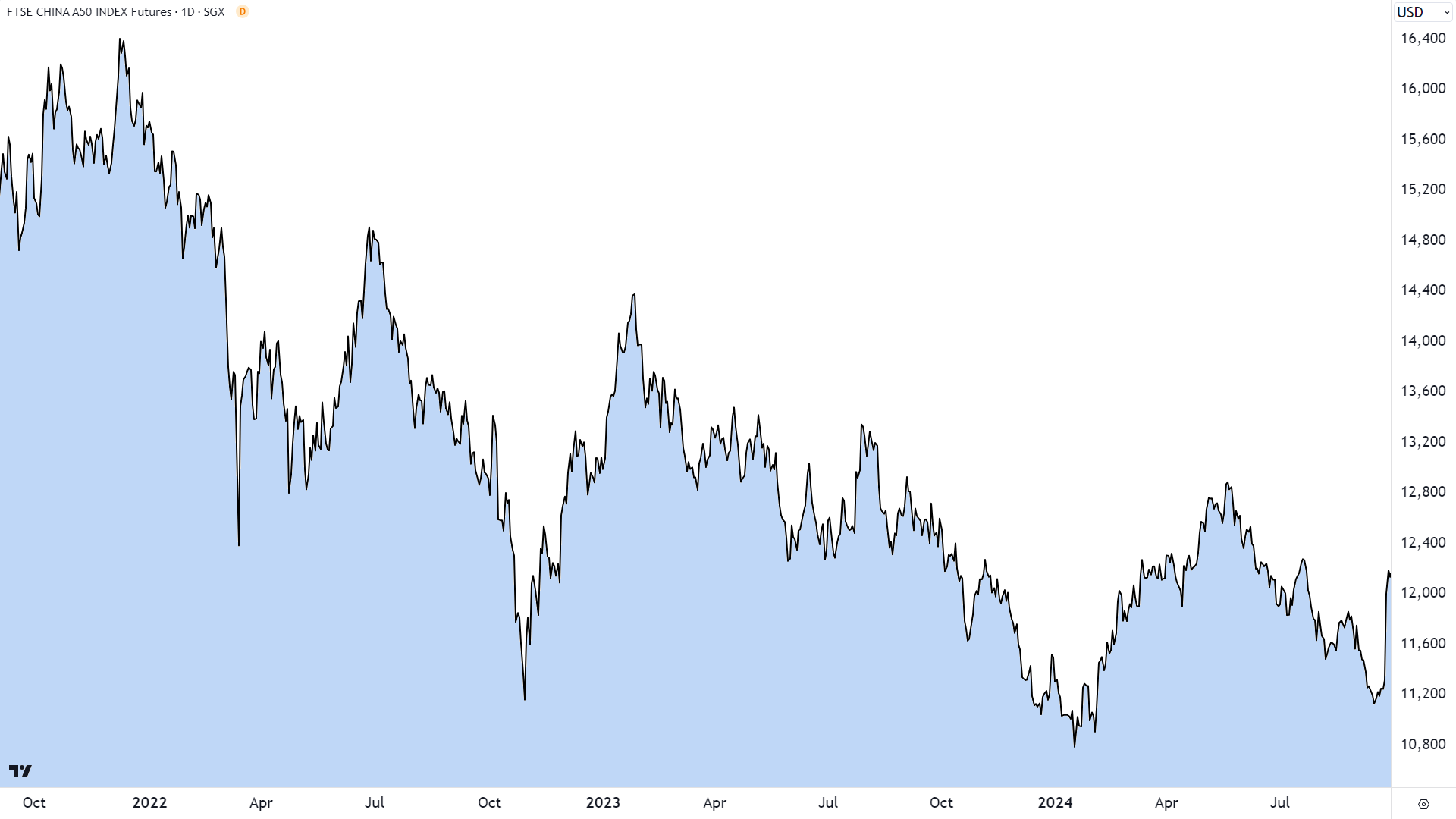
One natural conclusion to draw from the new stimulus measures is that they should result in increased demand for commodities such as iron ore, copper, nickel and lithium, as well as energy commodities such as coal and oil. The price of each of these commodities has jumped over the last two trading sessions, dragging along the share prices of companies that produce them. The S&P/ASX 200 Resources Index (ASX: XJR) is up 5.3% since Tuesday.
Gains among the stocks within the XJR have been substantially greater in many cases, as can be seen from the table below:
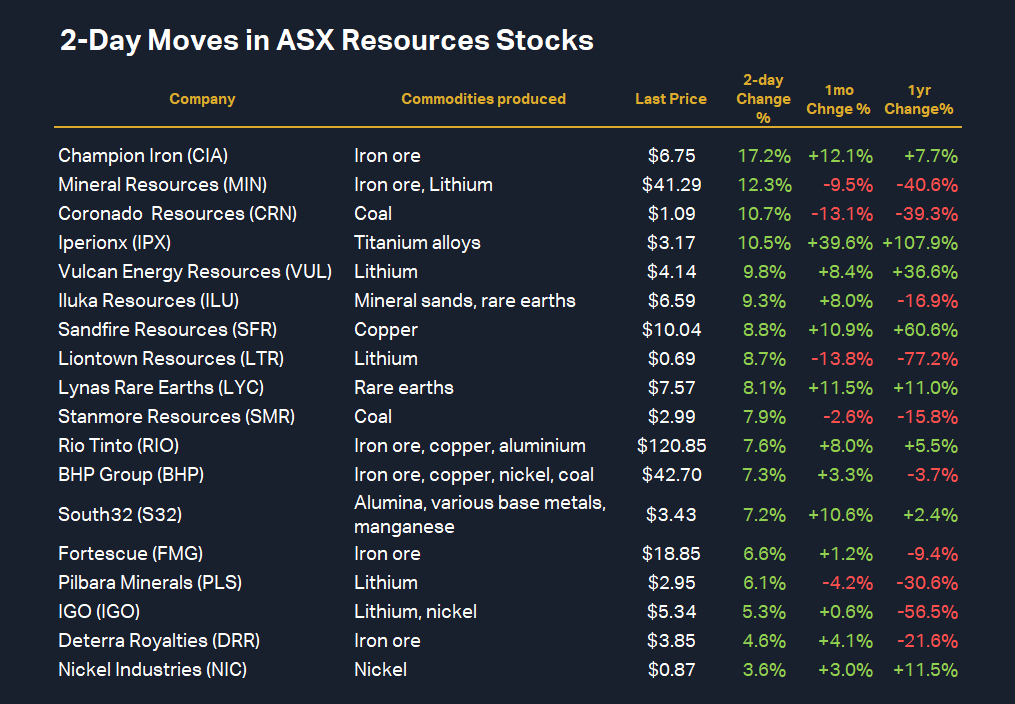
Flash in the pan or the start of the next big commodities move?
In two separate research reports released Wednesday evening titled “DataDig: China Stimulus trigger” and “China and the Miners”, Morgan Stanely intimates it isn’t convinced that the latest round of stimulus measures announced by Beijing are going to meaningfully move the dial for the ailing Chinese economy.
"We believe these measures could offer some support to housing market sentiment in the near term, but their sustainability is still in doubt, given that the key roadblock to housing market stabilisation remains elevated inventory."
–Morgan Stanley
On that last item, Morgan Stanley is referring to the 60 million in unsold apartments across China (Bloomberg Economics), which equates to over four years of inventory. The supply glut has contributed to steadily falling prices of Chinese residential property since mid-2021, which in itself has severely dampened investor sentiment. It appears to be a self-perpetuating downward spiral.
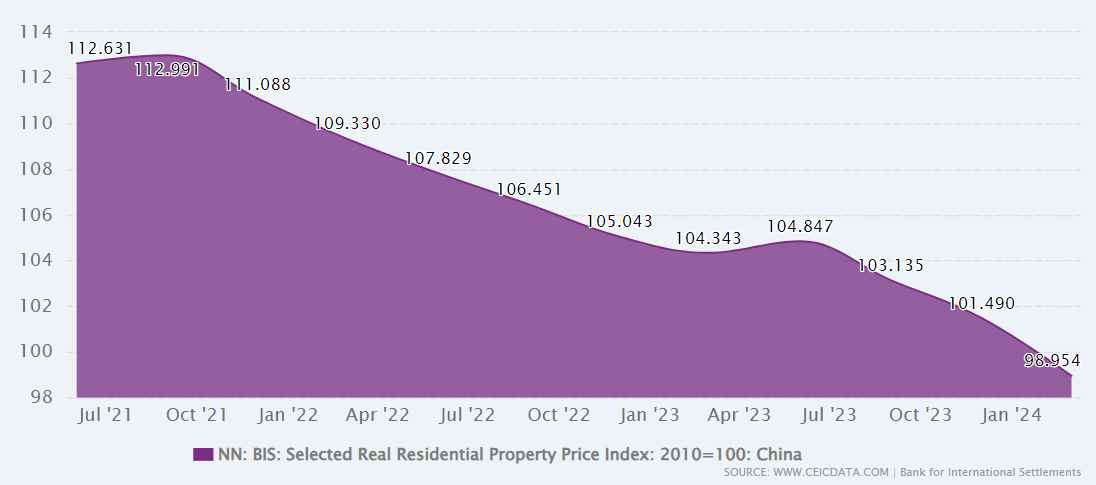
The other part of the equation is the lack of demand for credit from Chinese borrowers. The big question here is, even if Beijing takes steps to make credit cheaper and more widely available – will it entice borrowers – and therefore address the present crucial lack of demand for Chinese property?
Morgan Stanley suggests more must be done to address this issue, but monetary measures like the ones announced on Tuesday will not be enough in isolation. The broker believes that “material fiscal measures would be needed to drive a sustained improvement”.
It’s not all doom and gloom over the Chinese economic situation, however, suggests Morgan Stanley: “the move has lifted sentiment on China from a particularly low baseline, and helped to catalyse a move in iron ore prices towards physical fundamentals”. The broker thinks that iron ore prices can rally from their recent 2-year lows as we move into seasonal peak steel production. Typical year-end restocking and “a slowing pace of supply growth” will also assist, suggests the broker.
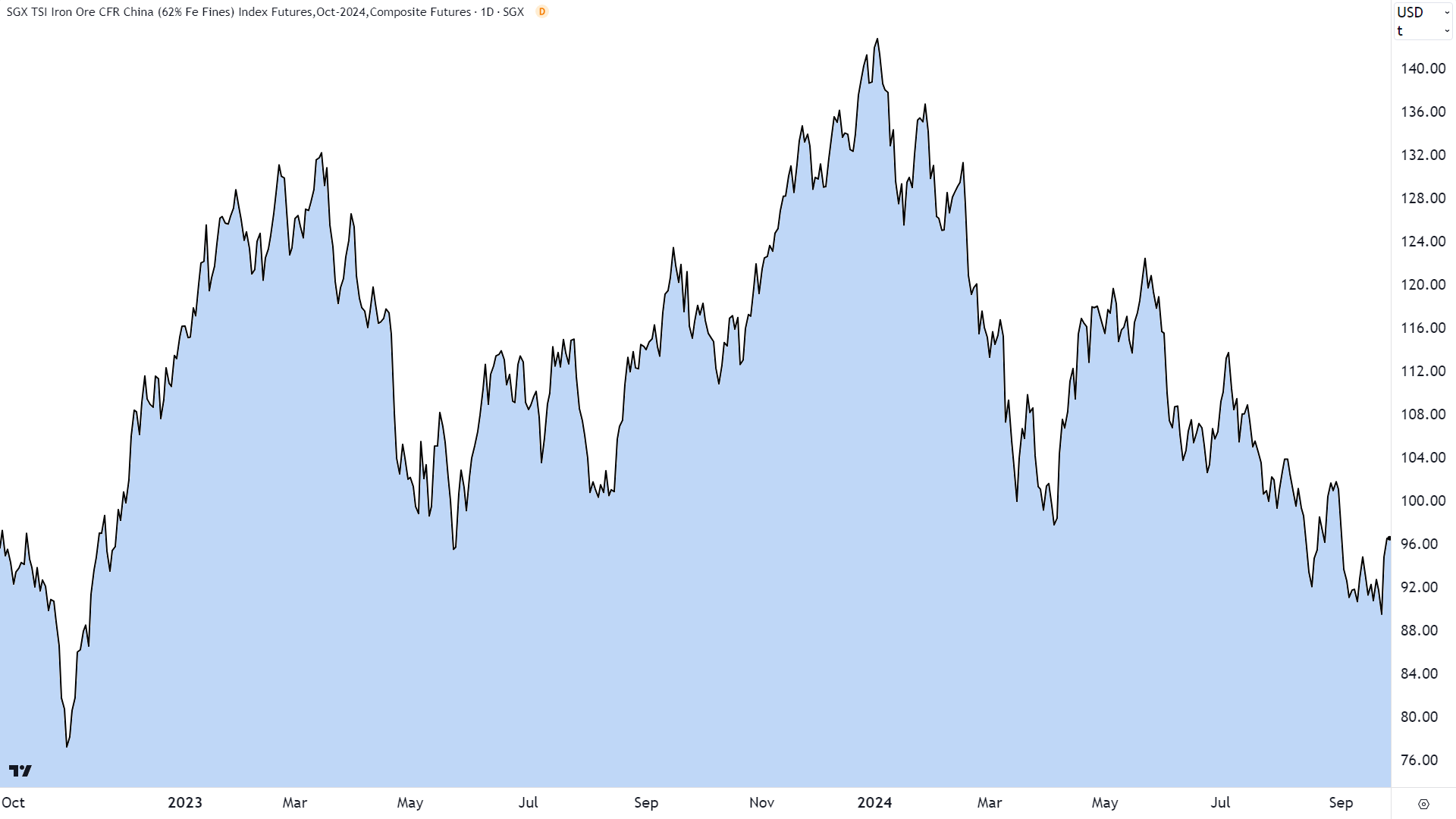
The current price of iron ore is US$96/t, up from Tuesday’s low of US$89.20/t (yes, no coincidence about the timing here!). Morgan Stanley sees further appreciation through to year end; the broker has a fourth quarter iron ore price target of US$100/t, with further recovery to US$105/t tipped by March next year.
The improving outlook for iron ore prices has triggered two recent upgrades within Morgan Stanley’s ASX iron ore coverage. Just last week it upgraded BHP Group (ASX: BHP) to OVERWEIGHT from Equal-weight and Fortescue (ASX: FMG) to EQUAL-WEIGHT from Underweight. These join other OVERWEIGHT-rated iron ore miner Mineral Resources (ASX: MIN), and the broker’s top pick in the sector, Rio Tinto (ASX: RIO).
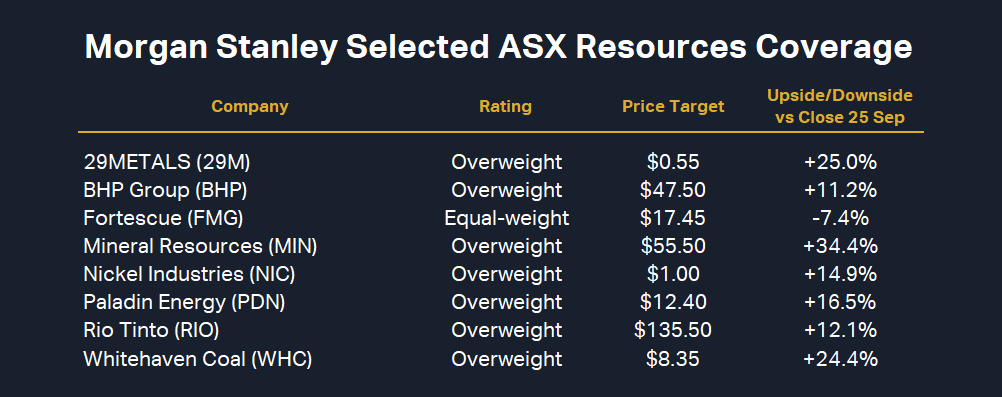
Looking across the rest of Morgan Stanley’s ASX resources coverage, it also likes coal producer Whitehaven Coal (ASX: WHC), uranium producer Paladin Energy (ASX: PDN), nickel producer Nickel Industries (ASX: NIC), and copper producer 29 Metals (ASX: 29M). Each of these stocks are also rated OVERWEIGHT by the broker.
This article first appeared on Market Index on Thursday 26 September.
5 topics
8 stocks mentioned

